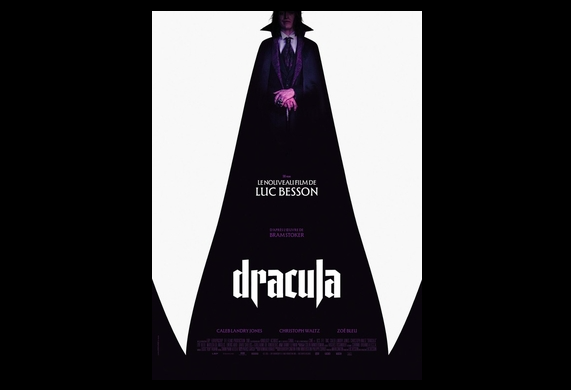
Luc Besson delivers a bold reimagining of the Dracula myth, blending haunting romance with gothic grandeur. Inspired by Bram Stoker’s novel, the film portrays love as both salvation and damnation.
Luc Besson’s latest film, Dracula, is generating buzz among audiences and critics alike. Inspired by Bram Stoker’s classic novel, the French director elevates the literary and historical roots of the story into a sweeping, gothic cinematic ode to love.
With Caleb Landry Jones, Christoph Waltz, and Zoë Bleu in the leading roles, this adaptation pays tribute to the novel’s blend of fact and folklore while firmly imprinting Luc Besson’s distinctive cinematic language. Through rich visuals, a haunting tone, and grand set design, the film transforms the familiar tale into something uniquely romantic and epic. At its core, the story remains faithful to the essence of Stoker’s original: a quest for unconditional love, often buried beneath layers of horror.
Set in 15th-century Romania, the story follows Prince Vladimir, who turns against God after the tragic death of his beloved wife, Elisabeth. Consumed by grief and fury, he sets off on a relentless search for her soul through the centuries. For 400 years, he wanders the world, looking into the faces of the pure-hearted, hoping to find her reincarnated spirit. It isn’t until the 19th century, in Paris, that he meets a young woman named Mina, who is the spitting image of Elisabeth. Could it truly be her? The cycle begins anew.
Dracula bears the hallmarks of a Luc Besson film: immersive visual storytelling, bold contrasts, fluid pacing, and symbolic lighting. His camera floats, dances, and spirals through space, wrapped in a spellbinding score that elevates every frame. These elements create a distinct identity for the film, inviting empathy and admiration for a character long misunderstood. Dracula’s darkness stems not from evil, but from centuries of exile, isolation, and sorrow. Like many of Luc Besson’s protagonists, he’s trapped in myth, hovering between a gothic past and a modern sensibility. He becomes a creature in search of meaning: a “Beast” haunted by the memory of his “Beauty,” or a Frankenstein driven by love rather than vengeance.
Here, Dracula dares to challenge God, fate, life, death, and time itself, guided only by desire and fed by blood.
In this surreal yet grounded universe, where innocence meets brutality and love defeats power, the antihero becomes a hero in a modern fairy tale. Behind the mask of monstrous violence lies a fragile being. In his search for identity, redemption, and passion, Dracula becomes deeply human, forever locked in his tower, yet mirroring us all. Love makes its own rules. The heart has its own reasons. And in this hellish inferno, the monster finally reveals his soul.

Comments